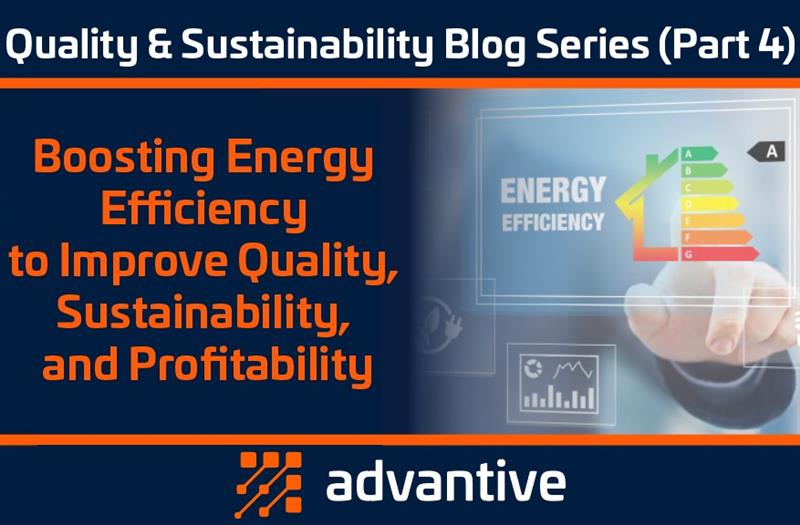
We’re back with part 4 of our Quality & Sustainability blog series. In our last blog, we focused on the impact waste reduction had on quality management and sustainability practices, specifically with scrap and overfill. Today, we’re going to explore energy efficiency in production, including how to streamline process setup, minimize downtime, and use data-driven insights to monitor process performance.
Energy Efficiency in Production
Energy efficiency serves as a bridge between production quality and sustainability. If we look at what we’ve talked about up to this point, we’ll start by looking at the product at the end of the production process to see if it’s good or bad. Backing up a little further, we want to look at the product while it’s in production.
Direct Data
Let’s talk about the direct data. You can directly measure energy use and its impact on product quality by monitoring the inputs and outputs of your processes. Collecting real-time data ensures you can intervene proactively to optimize energy consumption and reduce waste.
Target Near Tolerances
You can target near tolerance to increase energy efficiency in production. For example, let’s say you’re making a cup of coffee and are experimenting with techniques, like boiling water at different temperatures. Water boils at 100 degrees Celsius, and it makes a great cup of coffee. When you lower the temperature of the water to 90 degrees and even 85 degrees, the coffee tastes bad. However, when you go down to 80 degrees, the coffee ends up tasting good again. While it may not be as good as the properly heated coffee, it’s good enough to pass.
Improve Throughput
If you’re looking at the direct data and monitoring the inputs and outputs, you will likely be looking at the efficiency, especially if you’re doing this in bulk. It gives you the opportunity to explore, understand, and take advantage of the benefit from these relationships to make things more sustainable and profitable.
Minimize Unplanned Downtime
Let’s move onto leveraging efficiency even further by minimizing unplanned downtime. We’ll go over a manufacturing-related example that ties together monitoring processes and proactively responding to the issue.
Monitor Processes
For our example, you have a machine with rising amp draw and falling RPMs, indicating the need for maintenance. After speaking with your maintenance crew, they tell you dust accumulates in the machine, so they have to clean it out and regrease it every so often.
Respond Proactively
You’ve had the dialogue of tracking the machine parameters for quite some time, so you recognize the signal early and proactively schedule maintenance to prevent costly unplanned down time. Regularly monitoring machine parameters helps you schedule planned downtime, which has a lot less of an impact on your production schedule than unplanned downtime.
Process Setup to Enhance Energy Efficiency
Energy efficiency involves optimizing process setups and tolerances to ensure smooth operation and minimize waste. Let’s say you’ve identified a problem you were having in a process. You react by adjusting your process, so you don’t make that mistake again. The same thing can happen when you’re dealing with process setups for your machines. Streamlining setup is important whenever you’re switching a product – like we talked about with labeling. It’s important to ensure that it’s a regular part of setting up for your production to ensure consistency, reduce downtime, and enhance overall efficiency.
Understanding How Tolerances Improve Efficiency
We talked a bit about tolerances with overfill earlier in the blog. You can adjust process tolerances to avoid overuse of expensive materials or reduce the need for extensive rework. This significantly improves your profitability, while going hand in hand with your sustainability efforts.
Off-Center Targets
I mentioned the overfill example from our waste reduction section above. You might have a situation where there are two dissimilar materials that need to fit together in some way. If you off-center the target tolerance, you can use less of a costly material while maintaining fit and function, which allows you to reduce waste, use less of the expensive material, and improve profitability. These small adjustments can yield significant benefits over time.
Looking Ahead
Our topic today explored how energy efficiency contributes to quality and sustainability efforts. Manufacturers can enhance both their environmental impact and bottom line by addressing process inefficiencies, monitoring process inputs and outputs, and leveraging data to make informed decisions.
Join us next time as we dive deeper into the practical applications of real-time monitoring. Stay tuned!